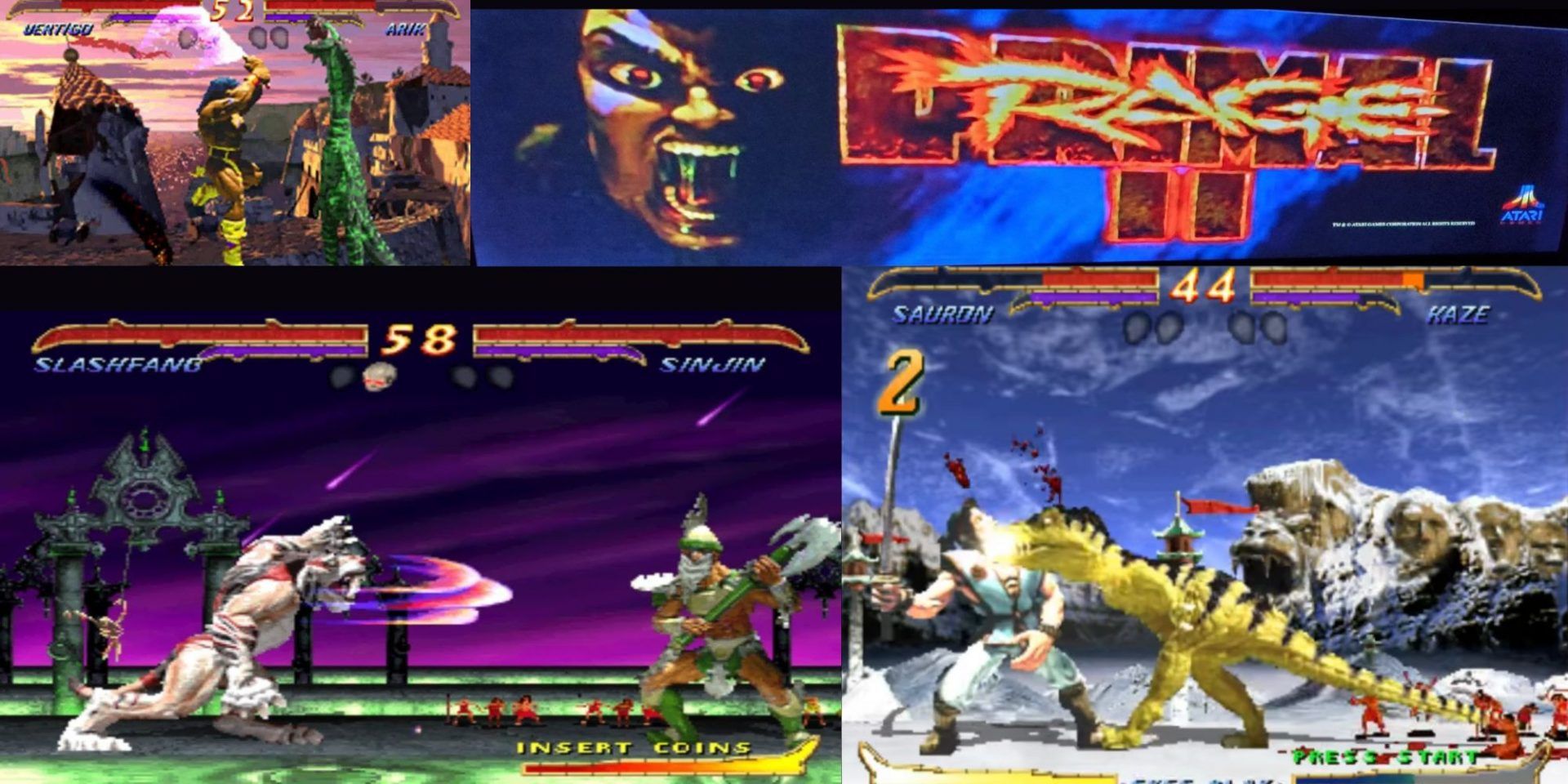If you strolled through an arcade in the mid-90s, you would have seen a cavalcade of fighting games, and probably have the likes of Mortal Kombat and Street Fighter entrenched in your nostalgic brain space. But in 1994, Atari Games' Primal Rage burst onto the scene; its stop-motion animation style mixed with deadly dino and gorilla combat made it the number one-ranked arcade game that year (as proudly displayed on the box art for home console versions).
The first Primal Rage even had a toy line including a board game, as well as its own comic book series and the novelization of its story. It was also ported to 10 consoles ranging from PlayStation all the way to the Tiger R-Zone, which was basically a handheld version of the Virtual Boy without the headset.
Safe to say that the game was... All the Rage.
The success invariably led to the production of Primal Rage 2 in 1995, with the 20-person team working with a solid budget of $2.5 million. The key difference was the sequel would use human avatars who could briefly transform into the Jurassic gods by utilizing special moves, though the game would later have a roster of 17 characters, including the gods from the first game.
So where did it all go wrong? The answer falls on both Atari Games and Midway. Atari Games placed a release date of summer 1996 on Primal Rage 2, and wanted to gather marketing feedback as quickly as possible rather than after the game was finished or at least after had its boards tested for bugs. So in a bad management move, they ended up shipping arcade boards of an unfinished game that constantly crashed because of bugs. While the team was able to fix the issues afterward, the reality is that the boards should have never been shipped in the first place.
A big reason why was because Primal Rage 2 was a much more massive game than its predecessor, and required more development time. First, there was the increased amount of animations. In the first game, the characters had around 400 different animations each whereas the sequel had between 1500 to 2000 unique animations per character. The high number of animations also meant it would take about half a year for each character to go from concept art to being put into the game. The focus on animation meant that balancing was neglected, which was quickly picked up by the public.
Atari Games also mismanaged the game's marketing. They started promoting and teasing the sequel in magazines, and even sent toys of a couple of characters, including the game's boss Necrosan, to stores before the game was even finished. Sensing a pattern here? But the death blow to the game came from inside the house in 1996, when Midway bought Atari Games from its then-parent company Time Warner. The first sign of trouble came after the acquisition, when the team asked Mortal Kombat developer Midway if they would allow for Mortal Kombat characters to be added as secret characters in Primal Rage 2. Midway declined the offer, which should have sent off some caution flags.
You are now under a new company home to the biggest and bloodiest fighting game in the world - the game that single-handedly freaked censors out into creating ESRB - and they will not share their characters? Primal Rage was not a small success, nor was it viewed as an up-and-comer in the fighting game genre, it was huge! Then later in the year, Midway took an ax to the company and fired tons of employees. Towards the end of 1996, they pulled the plug on Primal Rage 2, just as it was nearing completion, and its team was dispersed and put on different projects within the company.
It was not until 2014 that it was revealed that an arcade version of the cabinet still existed and was playable at Galloping Ghost Arcade in Brookfield, Illinois. People came from all over to get some time with the game, its new characters, their thousands of character animations, and simpler controls. A couple of years after that the game was patched it to run properly on the MAME emulator so that gamer could enjoy it for posterity.
Did Midway just buy out the competition to destroy it? Midway would later filed for bankruptcy in 2009, which passed over the rights to their library of IPs to Warner Bros. Prior to filing for bankruptcy, they had ownership of two very profitable fighting games, and they killed off one for no apparent reason and did not even bother giving its sequel a chance. Now, their toys are in Warner Bros' toy chest instead of their own.

